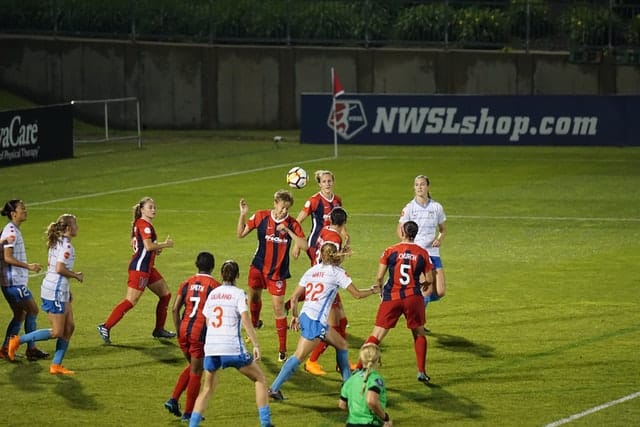A good defense in a soccer team is essential if the team is hoping to compete for big soccer titles. A famous quote by Sir Alex Ferguson goes as follows:
“Attack wins you games, defense wins you titles” – Alex Ferguson.
In other words, good defense is the key to the success of any soccer club. But what exactly do soccer defenders do in soccer? And why does their role have so much importance?
A soccer defender’s main objective is to prevent their opponent from scoring a goal against their team. Soccer defenders are also required to start the next attack for their team, assist the midfielders in the midfield, and assist the forward players inside their opponent’s side of the field.
In other words, even though the defender’s obvious role is to defend their net against the opponent, they also play other equally important roles in today’s soccer.
But in order to explain exactly what soccer defenders do on the field, we need to first explore the different types of defenders in a soccer team and then explain the job of each one of them.
The different Defensive positions in soccer.
In most soccer formations, the number of defense players ranges between 3 to 5 players. However, not all of these defenders have the exact same role. Some defenders’ primary focus is to only defend their net while other defenders’ jobs is to not only defend the net, but also assist their forward players during the attacks of their team.
The following are the 4 types of soccer defenders:
- Centre-back
- Full-back
- wing-back
- sweeper
But what do each of these defenders do in soccer? You’re about to find out.
1- What do Centre-back defenders do in soccer?
The Centre-back defenders exist in almost all of the soccer formations used these days. Centre-back soccer defenders are the defenders that stand close to the goalkeeper in the center and their main objective is to not let any player from the opponent team to kick the ball towards their net.
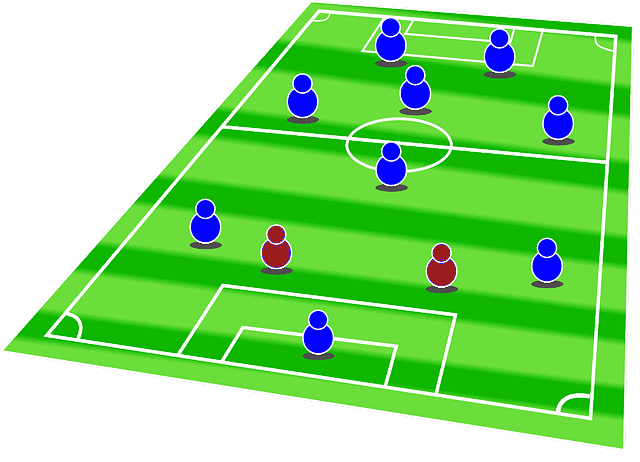
Usually, you’ll find that soccer teams use 2 to 3 Centre-back defenders in a soccer match. These players need to be tough and strong as their main objective is to do whatever it takes to not let their opponent score against their team.
Centre-back defenders usually stay on their team’s side of the field throughout most of the soccer game. They need to be close to their team’s net in order to handle any counter-attacks by their opponents at any time.
Even though the Centre-back defender’s main objective is to protect their team from attacks, they also play other important roles on the field.
For example, when their team wins a corner kick or a dangerous free kick, some Centre-back players join their team players inside the penalty area of their opponent in order to attempt to score.
In other words, the Centre-back defenders also attempt to score goals whenever they get the chance to. The reason why these players try to score during corner kicks is because they are generally good with headers as they are usually tall and tough.
The strength and the height of Centre-back defenders gives them a good chance of scoring against their opponent during corner kicks, and that’s when they leave their traditional position. But other than that, you’ll always find them close to their goalkeeper trying to prevent the opponent from kicking the ball towards the net.
2- What do full-back defenders do in soccer?
Full-back defenders are also required to prevent the opponent from scoring goals. However, they stand closer to the sidelines of the field instead of standing in the center of the field close to the goalkeeper like the Centre-backs do.
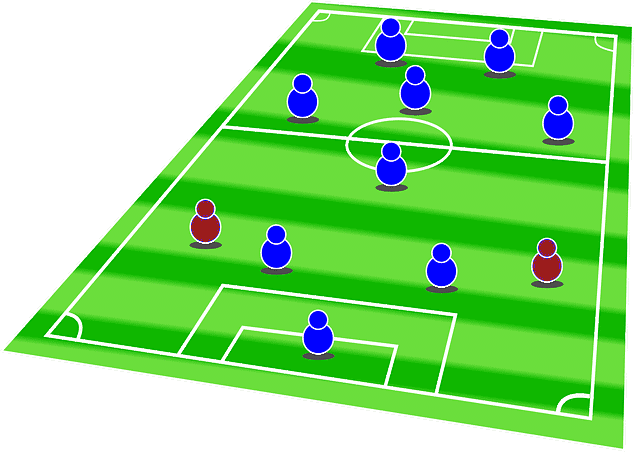
Full-back defenders are usually supposed to stop their opponent’s wingers from crossing the ball towards the center of the field close to the net. In other words, the full-backs will be defending against the opponent players who are trying to approach the net from the sides of the field instead of from the middle.
Many soccer teams rely on 2 full-backs during a soccer game. They use one full-back on each side of the field. However, some teams do not use any full-backs at all and they instead use 3 Centre-backs defenders only.
Unlike Centre-backs, you’ll find full-backs crossing the middle line of the field more often. The full-backs usually assist the midfield players whenever their team has the ball. Sometimes, they also try to advance forward and make long passes to their forward players in order to put them in a good position to score goals.
3- What do wing-back defenders do in soccer?
The wing-back defense position is the most physically demanding position out of all the other defense positions and maybe out of all the soccer positions in general.
Wing-back soccer players are basically required to act as both a full-back when their team does not have the ball, and as a forward winger when their team has the ball.
When the opponent has the ball, wing-backs will usually be standing where a full-back would stand. In other words, they attempt to prevent the opponent’s wingers from advancing forward.
However, when their team has the ball, the wing-back defenders will act like forward wingers and they will run towards their opponent’s side of the field to attempt to cross the ball to their striker or to any other player that is close enough to the opponent’s goal.
The reason why the wing-back soccer position is extremely demanding physically is because the players are required to keep doing high intensity sprints back and forth on the large soccer field all the time. They should run towards their opponent’s net when they have the ball, and they should quickly run towards their own net when their team loses the ball.
4- What does a sweeper do in soccer?
The sweeper soccer defense position is made for certain soccer formations only. Usually, a sweeper exists when the team is playing with 5 defenders on the field and when they are trying to “Park the bus”.
A sweeper in soccer is a defender that plays behind the Centre-back defenders and stays close to their team’s goalkeeper almost all the time. The job of a sweeper is to stand as the last line of defense against the opponent before they reach the goalkeeper and the net.
Usually, the sweeper remains close to the goalkeeper throughout the whole game and they do not attempt any attack moves because their job is to always be ready whenever the opponent team attacks.
A sweeper is highly needed whenever a team is playing against a better attacking team. Playing with 5 defense players and having one of them be a sweeper will make it harder for the opponent to penetrate the defense even if they have great attacking players on their team.
With that said, you now know what defenders do during a soccer game. But it’s also good to know what makes a good defender in order to understand the defensive positions in soccer even more.
What makes a good soccer defender?
1- Defenders should be tough.
Defenders in soccer should be tough and fearless. Throughout a soccer match, defenders might face situations where they need to act as a wall and let the ball hit them at high speeds instead of letting it move towards the goal.
Defenders also need to protect their net against corner kicks, direct and indirect free kicks, and much more. Most of these scenarios require a tough defender.
Toughness helps the defenders dominate their opponent when they are using their shoulders to tackle them. Tough and fearless defenders will also do a great job when they are standing as a wall against a free kick taker.
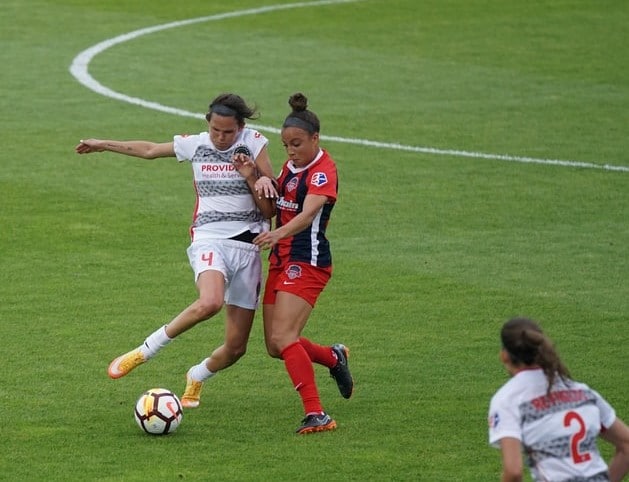
To put it in simple words, a great defender is a tough and a fearless defender.
2- Defenders need good tackling skills
Tackling is an essential part of the soccer game. If you don’t know what tackling is, you can check this article that discusses it in detail.
But in simple words, tackling in soccer is an attempt to extract the ball from an opponent.
Since the defenders’ primary job is to prevent the opponent from scoring, the defenders will be attempting a lot of tackles against their opponent in order to take the ball from them.
With that said, a defender needs to have good tackling skills. Any mistake during a tackle can lead to a foul in a dangerous position, and some of these fouls may result in a red card for the defender who attempted to do the tackle.
So, if a defender isn’t extremely accurate with their tackles, they may cause their team to lose a player till the end of the match, and they may give their opponent a perfect opportunity to score if the tackle was attempted in a very sensitive position.
3- Defenders need great heading skills.
Soccer defenders are required to do a lot of headers during a game.
For example, when the opponent wins a corner kick, the defenders will have to head the ball away from the net when the corner kick is taken.
Also, as mentioned before, Centre-back defenders attempt to score header goals too when their team wins a corner kick.
The defenders will also need to use their head whenever the opponent team crosses a high ball towards the net, and they will sometimes have to use headers to deal with the high and long passes that their opponents use to penetrate the defense.
You can learn more about how to head the soccer ball yourself in this article.
4- Defenders should be fast.
While speed isn’t the most important trait a Centre-back defender can have, it definitely is one of the most important traits a winger-back defender can have. By now, you already know how much important speed is for winger-back defenders.
Speed is still very important for Centre-back defenders too. If the forward players of the opponent team are fast, then the Centre-back will have a hard time keeping up with them if they too aren’t fast.
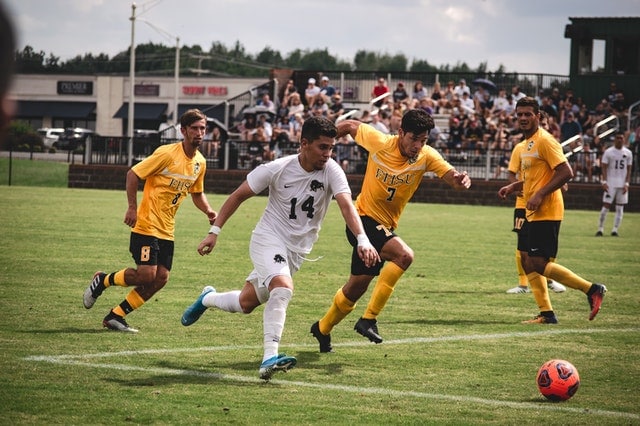
5- Defenders need great prediction skills.
A great defender is a defender that can read the opponent’s next move and act accordingly. No matter how tough and fast a defender is, if they poorly predict the opponent’s next moves, then they will have a hard time defending the net.
If a defender is able to predict whether the opponent is going to pass the ball to their teammate or if they are going to attempt to dribble past them, then the defender will have a better response time since they will be acting even before their opponents makes their move.
In other words, a defender needs to be smart about their next moves and they should have a full vision of their surroundings in order to make better predictions about their opponent’s next moves.
With that said, I will end my article here. Here’s a summary of what you have just read.
SUMMARY
Defenders in soccer are the players whose main job is to prevent the opponent from scoring goals. Defenders also play different roles on the field like assisting the midfielders and the forwards, and attempting to score goals when their team wins a corner kick or a dangerous free kick.
Similar Article:

